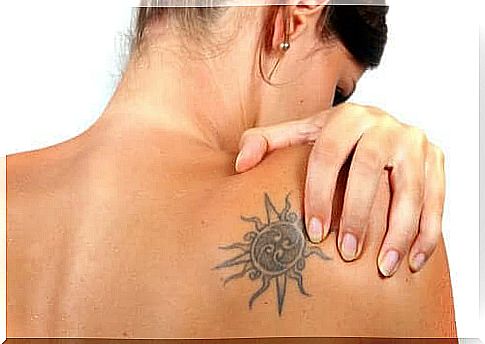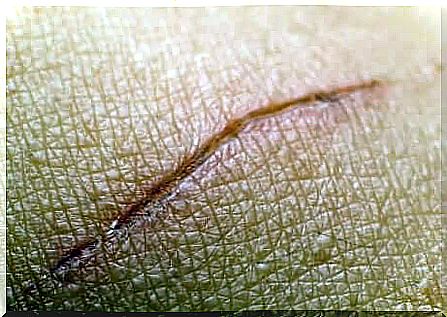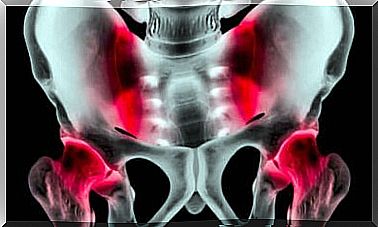Is It Possible To Remove Tattoos?
Many people wonder if it is possible to remove tattoos. After getting a tattoo at some point in our life, sometimes a change of mind can occur later. Find out today if it is possible to eliminate them.

Removing tattoos is more common than you might think. Even if a person gets a tattoo and assumes that they do it for their entire life, over time there may be regrets or a desire to change.
According to some statistics collected from tattooed people, after five years of existence, nearly 60% regret it. Not all of this regretting group proceed with tattoo removal, but a large part does.
Dermatologists have seen an increase in tattoo removal consultations around the world. Of course, this is also linked to the fact that more and more people are getting tattoos. Anyway, from 2012 to today, tattoo removal procedures have doubled in the annual average.
The procedure is not straightforward because the tattoo is an ink that sits in the dermis, the middle layer of the skin that sits below the surface. The tattoo needle penetrates the epidermis, the surface layer, and deposits droplets which soak up in the cells.
In addition to being difficult, the procedure becomes expensive. The removal of tattoos is therefore not accessible to everyone. It should also be taken into account that after the procedure is completed, there may be scarring and changes in skin color.
Techniques to remove tattoos
To remove tattoos, there are three basic medical techniques. Each has its indication, and its applications. It is the dermatologist who will choose the best technique for each patient. Let’s take a closer look at each of them.
The laser
The most used technique is the laser known as Q-switched. It is a very powerful pulsed laser, with some variations depending on the type of skin to be treated.
It is not possible to remove the tattoo in one go. Laser tattoo removal treatments include several sessions that depend on the size of the tattoo, its colors, duration, and skin type.
Some tattoos require up to eight laser sessions. Each session lasts about twenty minutes, but the sessions must be spaced out. Between each application, a certain time must elapse, sometimes lasting a month. A treatment can therefore last almost a year.
The laser is applied in outpatient clinics, not in operating rooms. Local anesthesia is used to decrease the pain caused by the laser pulse. Subsequently, some side effects may appear in the treated area, such as inflammation or bleeding. The doctor responsible for the treatment will be the one who will indicate the treatment to be carried out in this case.
Conventional surgery
Tattoos can also be removed using conventional surgery. This procedure is possible on small tattoos. Otherwise, it would be impossible to close the skin.
It is an outright extirpation. Anesthesia is administered, the edges to be removed are defined by a scalpel. Then, the piece of skin with the tattoo is removed and closed with stitches. Obviously, there is still a scar.
This technique is totally effective. However, it is interesting only for small tattoos so that it does not affect the aesthetics of the scar.

Dermabrasion to remove tattoos
The third technique available for removing tattoos is dermabrasion. As the name suggests, the dermabrasion technique involves sanding the skin to remove stained cells and allow some of the ink to flow as a liquid.
The procedure begins with cooling the skin to desensitize it, as if it were anesthesia. Then, a device is applied to the tattooed skin which turns quickly, with a brush capable of causing abrasion of the skin.
This is a painful technique that is performed in one session. The inflammation in the treated area usually lasts for several weeks. It is estimated that side effects can extend to a month.
This technique is less efficient than the laser, for example, but less expensive. Some people are therefore turning to dermabrasion, even if currently it constitutes a minimal portion of treatments.

Aftercare
Regardless of the technique used to remove tattoos, it will be necessary to take precautions afterwards. Side effects are actually present in every procedure.
Among the general measures to follow after a session, we can mention:
- Isolation of the treated area, to avoid friction.
- Application of creams indicated by professionals for each case: these are usually creams with antibiotics as well as skin repairers.
- Application of cold to reduce inflammation.
- Hygiene with neutral soaps and without hot water.
Bottom Line: It is possible to remove tattoos, but the techniques to achieve this have drawbacks. One should not only think about the existing techniques, but also about the side effects which require special care.
If you are considering removing a tattoo, it is best to see a dermatologist who can advise you. He or she will assess your tattoo and skin to suggest the best technique for you.









